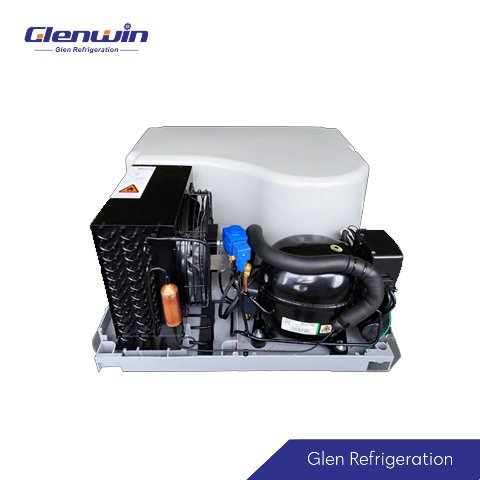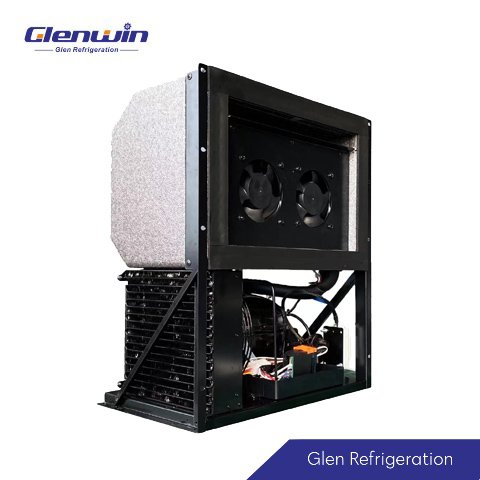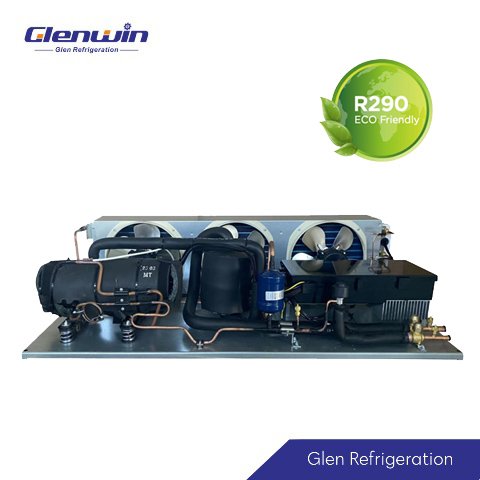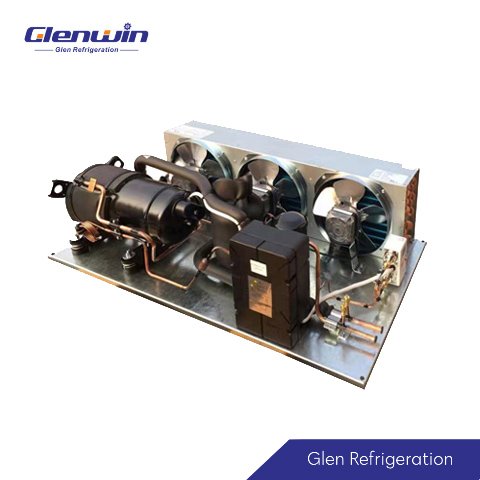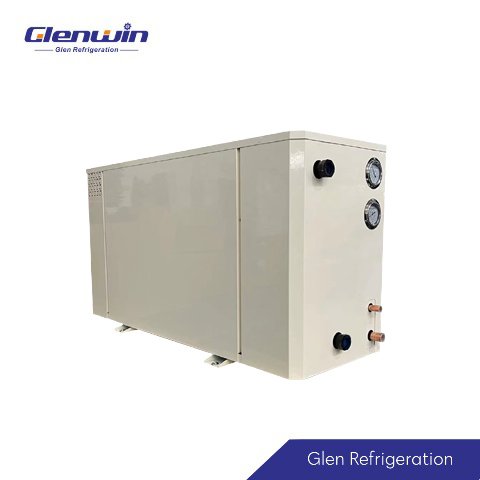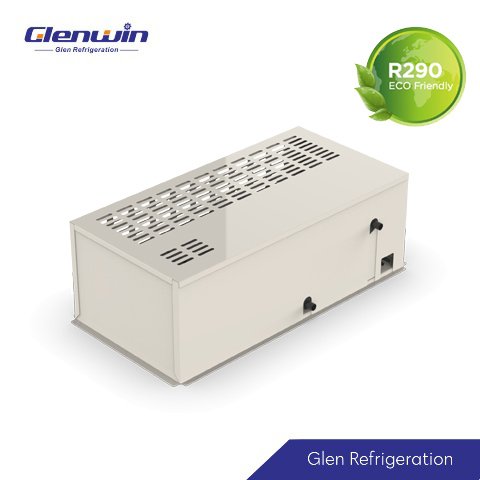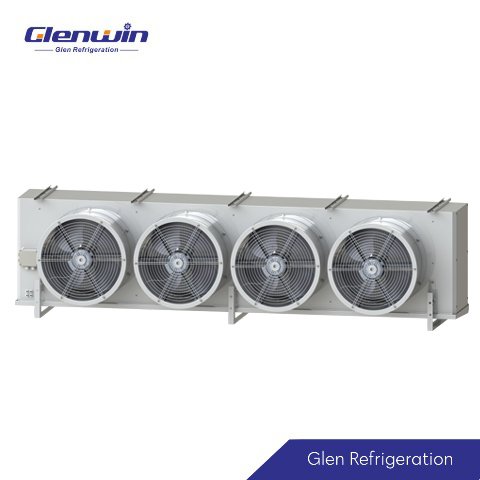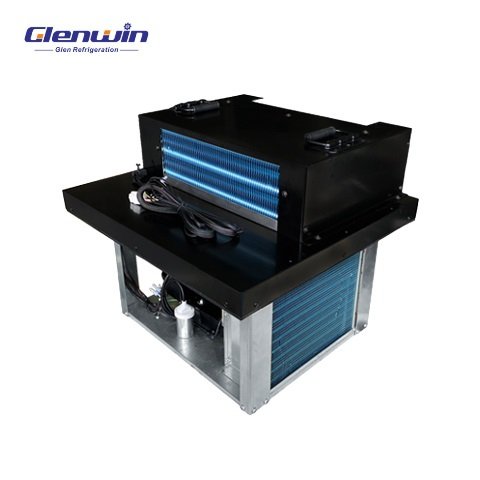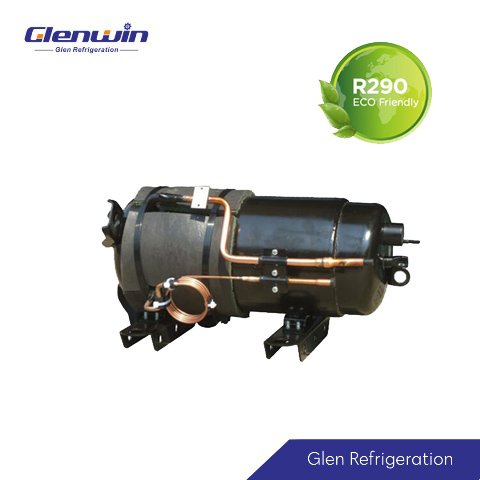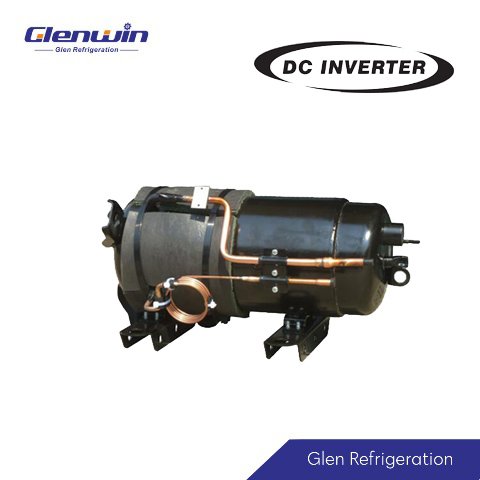What is Expansion Valve in Refrigeration?
The refrigeration system consists of refrigeration compressor, condenser, expansion device, and evaporator. The expansion valve is one of the four major components of the refrigeration system, and it is an important device to regulate and control the flow and pressure of the refrigerant entering the evaporator.

What’s The Function of Thermostatic Expansion Valve In Refrigeration System?
The TXV valve is an important part of the refrigeration system. It controls the flow of refrigerant entering the evaporator by controlling the superheat of the gaseous refrigerant at the outlet of the evaporator.
How Does A Thermal Expansion Valve Work?
The thermal expansion valve consists of temperature sensing bulb, capillary, valve seat, diaphragm, ejector rod, valve needle and regulating mechanism, the external thermal expansion valve also includes external equalizer line.
The TXV sensing bulb is installed at the outlet of the evaporator. The thermal expansion valve uses the temperature sensing bulb to sense the superheat of the refrigerant vapor. (The superheat refers to the value at which the actual temperature of the vapor is higher than the evaporation temperature), thereby adjusting the opening of the TXV valve to control liquid refrigerant flow into the evaporator. The txv sensing bulb is in contact with the outlet pipe of the evaporator, and when the outlet temperature of the evaporator decreases, the volume of the liquid in the temperature-sensing bulb, the capillary tube and the upper chamber of the film shrinks, and the valve port of the expansion valve will be closed to limit the refrigerant from entering the evaporator. Conversely, if the evaporator outlet temperature rises, the TXV valve will open, increase the refrigerant flow.
Where is The Thermal Expansion Valve Located?
The expansion valve must be installed in the liquid pipeline before the evaporator, and the TXV valve location should be close to the evaporator.
Where Is The Expansion Valve Sensing Bulb Location?
The TXV sensing bulb location is very important. The right position of the sensing bulb matters TXV adjustment accuracy.
The temperature sensing bulb is generally installed above the suction pipe, and it is better to be installed on the horizontal suction tube (Generally TXV sensing bulb placement vertical is not suggested). At the same time, it is necessary to ensure that the temperature sensing bulb is close to the suction pipe to improve the heat transfer effect between the temperature sensing bulb and the refrigerant in the suction pipe.
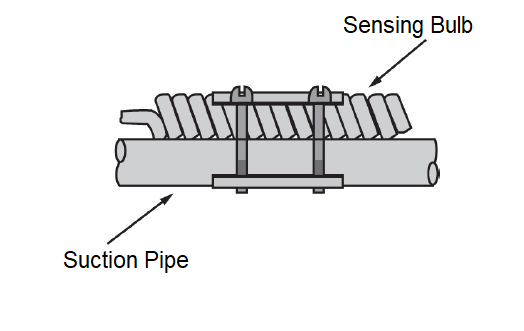
The temperature sensing bulb needs to be fixed on the suction pipe. The temperature-sensing bulb should maintain good thermal contact with the suction pipe, and the joint should be clean and firm.
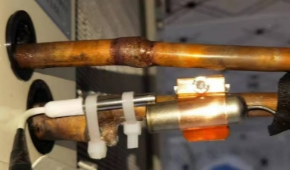
We all know that after the expansion valve temperature sensor is fixed, it is necessary to insulate the temperature sensor bulb; If no insulation, the temperature sensor will be easily affected by the external temperature, which will lead to inaccurate adjustment of the expansion valve opening.

The expansion valve bulb position should never be at the bottom of the suction pipe, as oil at the bottom of the line may produce false signals.
The temperature-sensing bulb should be fixed on the suction pipe lower than the valve body as far as possible. If the temperature-sensing bulb must be installed higher than the valve body, the capillary at the junction of the temperature sensing bulb should be bent upward into an inverted “U” shape; to prevent liquid from entering the valve and reducing the sensitivity and accuracy of the thermal expansion valve.
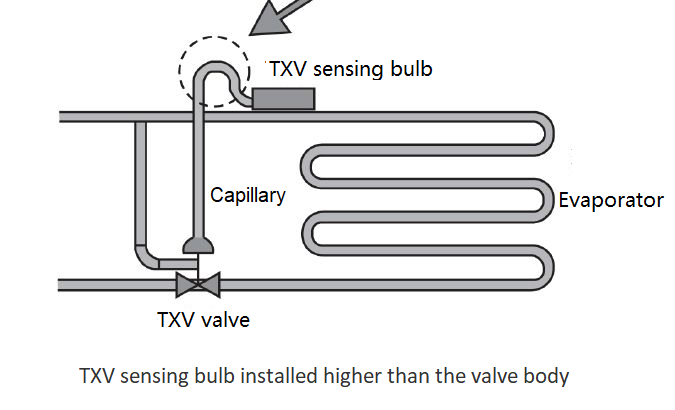
The specific installation location can refer to the following two points:
(1) When the diameter of the horizontal air return pipe is less than 7/8″ (22mm)
The temperature sensing bulb should be installed at the upper of the horizontal suction pipe, which is the “1 o’clock position”. The purpose of this is that the temperature felt by the temperature sensing bulb is gaseous and not affected by liquid substances.
(2) When the diameter of the horizontal air return pipe is greater than 7/8″
The temperature sensing bulb should be between 45° below the horizontal axis of the large-diameter suction pipe, that is, at the “4 o’clock” position.

What Is Refrigerant Distributor?
The refrigerant distributor is a device connected to the outlet of a thermostatic expansion valve (TEV) and each evaporator coil circuit.
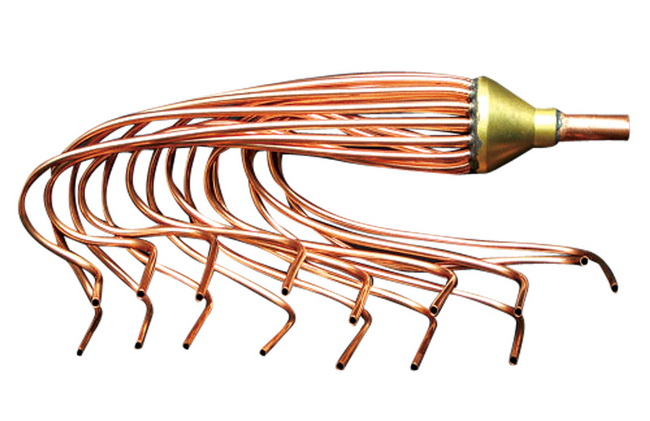
Where should the external equalizer be installed?
The external expansion valve includes the external equalizer line. The external equalizer line should be installed after the TXV Bulb. That is, the TXV sensing buld should be installed before the equalizer.
What’s The Function of Refrigerant Distributor?
The refrigerant distributor equally distributes refrigerant flow from the thermostatic expansion valve (TEV) into each circuit of a multi-circuit evaporator coil.
Hoe to Install the Refrigerant Distributor?
The best performance is usually obtained when the distributor installed vertically downward, so the vertically downward installation is recommended.

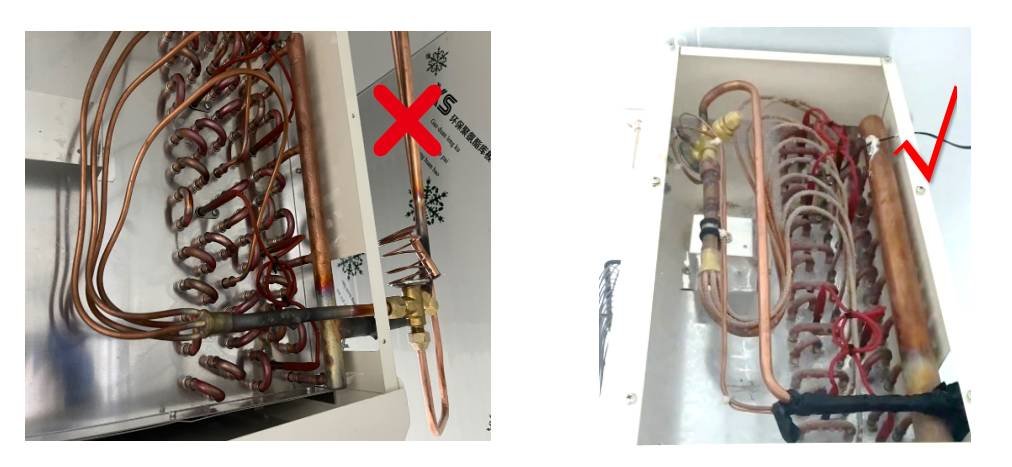
How to installa TXV? Please click here to DOWNLOAD “TXV Installation Recommendations”.
If you have any questions about how to install a TXV, feel free to contact with us.
Glen Refrigeration Takes The Leading Way in Energy Efficiency and ECO-friendly Condensing Unit and Monoblock Refrigeration Unit in China
Glen Refrigeration has proudly served our customers high energy efficiency and ECO-friendly condensing units and monoblock refrigeration units, includes inverter condensing unit, R290 condensing unit and hot gas defrost refrigeration system to help our customers lower the operation cost.
Glen Refrigeration’s products range:
We are committed to be your one-stop-shop of condensing units and refrigeration systems for commercial refrigeration.
If you have any questions about the commercial refrigeration cooling system, contact us by Email or fill out the contact form below, we are ready to help!
Email: info@greehvacr.com
Phone (Whatsapp): 0086 15057108995






